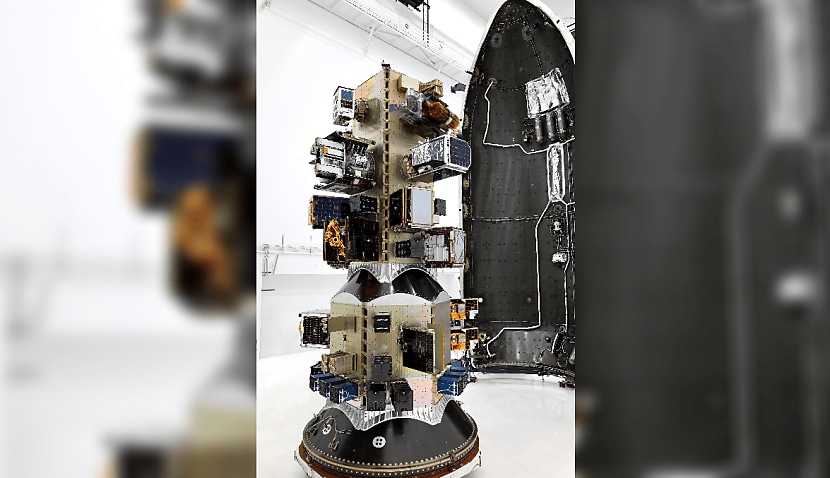
Speaking at the SIAA’s annual conference in Canberra, Palermo said the reports he’d received on their condition were positive, and the agency wished them well for their conditioning phase.
CUAVA-2, Kanyini, and Waratah Seed lifted off via SpaceX’s Transporter-11 mission just days ago in a hugely significant launch for the local industry.
Palermo said the three launches were a culmination of “years of collaboration between industry, academia and government”.
“It demonstrates what is possible when we draw on every segment in our national sector,” he said. “I also want to extend that congratulations to Curtin University Binar’s space program.
“Just a few weeks earlier, we saw a trio of CubeSats go to the International Space Station. I know they’re looking to have their deployment into space soon.
“We now have another six objects in orbit, which is more than a 10 per cent increase in Australian objects in orbit, and many more in the pipeline.
“They demonstrate the ongoing momentum in the sector and, importantly, growth in our space heritage.
“For me, it highlights that we are transitioning beyond initial investments and PowerPoint slides about what we might do to what we are doing in space.”
The Waratah Seed Space Qualification Mission is a NSW government-funded space-flight qualification initiative delivered by the University of Sydney. It is carrying tech from five competition-winning NSW space start-ups as well as technology from commercial clients.
Kanyini, meanwhile, is South Australia’s bushfire-detecting satellite, a collaboration between the SA state government, SmartSat CRC, satellite manufacturer Inovor Technologies, and global IoT provider Myriota.
Its payload includes a hyperspectral imager – a device that analyses the composition of materials on Earth from space. It will be used to detect information beyond the visible eye, including analysing vegetation and soil to a granular degree and detecting bushfire smoke.
Finally, CUAVA-2 is the second iteration of the CUAVA organisation’s CubeSat program. CUAVA, as an organisation, is the Australian Research Council’s training centre for CubeSats, uncrewed aerial vehicles (UAVs) and their applications.
Like Kanyini, CUAVA-2 will carry a hyperspectral imager developed by the Space Photonics Group at Sydney University as well as a GPS reflectometry payload developed by the Australian Centre for Space Engineering Research at the UNSW.
Transporter-11 was the 12th flight for the first-stage booster supporting this mission, which previously launched SDA-0A, SARah-2, and nine Starlink missions.
Onboard, the latest was 116 payloads, including CubeSats, microsats, and an orbital transfer vehicle carrying eight of those payloads, five of which will be deployed at a later time.
Binar 2, 3, and 4, meanwhile, are carrying instrumentation from CSIRO to test how new materials can protect electronics against harmful radiation in space, alongside transmitters from Perth-based communications systems company AVI.
Once successfully deployed, the CubeSats will orbit the Earth approximately every 90 minutes for 6–12 months at 400 kilometres above the planet’s surface.

Adam Thorn
Adam is a journalist who has worked for more than 40 prestigious media brands in the UK and Australia. Since 2005, his varied career has included stints as a reporter, copy editor, feature writer and editor for publications as diverse as Fleet Street newspaper The Sunday Times, fashion bible Jones, media and marketing website Mumbrella as well as lifestyle magazines such as GQ, Woman’s Weekly, Men’s Health and Loaded. He joined Momentum Media in early 2020 and currently writes for Australian Aviation and World of Aviation.
Receive the latest developments and updates on Australia’s space industry direct to your inbox. Subscribe today to Space Connect here.












